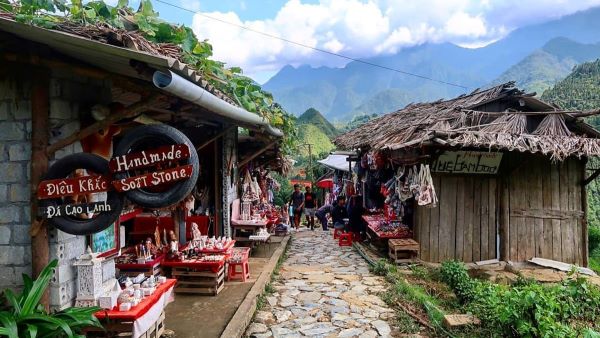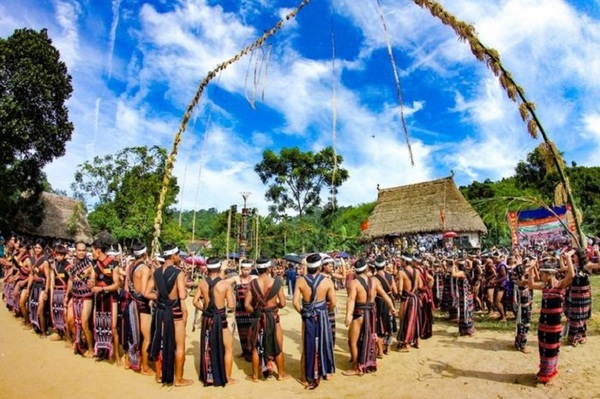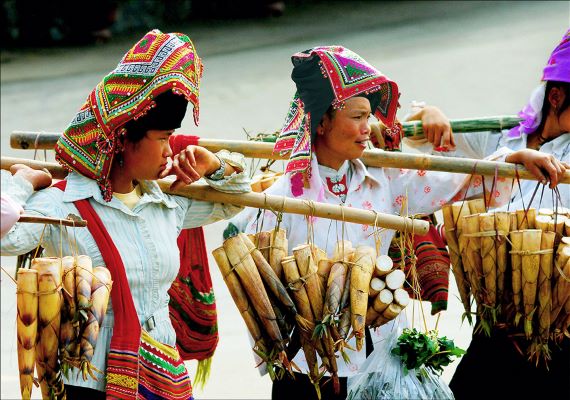 Name of ethnic group: San Diu (San Deo, Trai, Trai Dat, and “Man Quan Coc” (Man in Shorts)
Name of ethnic group: San Diu (San Deo, Trai, Trai Dat, and “Man Quan Coc” (Man in Shorts)Population: 126,237 people (Year 1999)
Locality: The San Diu live in the midlands of Quang Ninh, Hai Duong, Bac Giang, Bac Ninh, Vinh Phuc, Thai Nguyen, and Tuyen Quang provinces.
Customs and habits: The San Diu house is built level with the ground. The roof is usually covered with thatch or tile, the walls are built of bricks, and the houses are clustered closely together in each village. The husband (father) is the head of the family. The children take the family name of the father and only sons have the right of inheritance. The parents also decide when their children should marry. The funeral ceremony of the San Diu has many rites. The San Diu worship their ancestors and the God of the Kitchen. They hold many annual ceremonies usually before crop planting, after crop planting, after the new rice matures, and when they need to pray for rain.
Culture: The San Diu language belongs to the Han Group. The San Diu sing alternating songs (soong co) during cultural activities and at festivals. They have many musical instruments such as horns, clarinets, drums, flutes, cymbals, and castanets. They also like to play many games such as walking on sticks, a game involving sticks, badminton in the San Diu way, and tug-of-war.
Costumes: The San Diu have gradually adopted the Kinh style of dress.
Economy: The San Diu engage in rice farming practices through submerging their fields, animal and forest exploitation, fishing, fish breeding, tile and brick making, blacksmithing, and basketry. The San Diu also manufacture the no-wheel “quet” cart drawn by a buffalo to transport goods.













